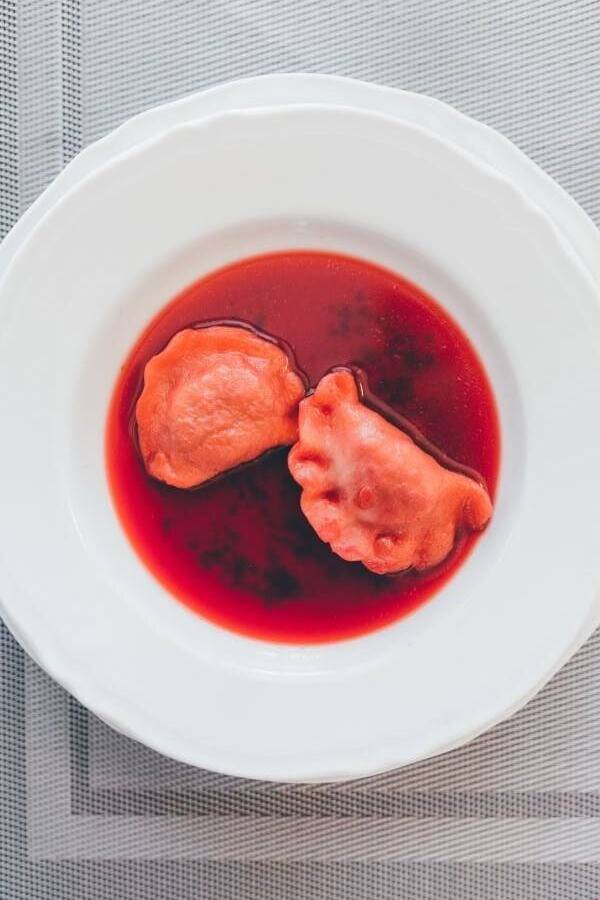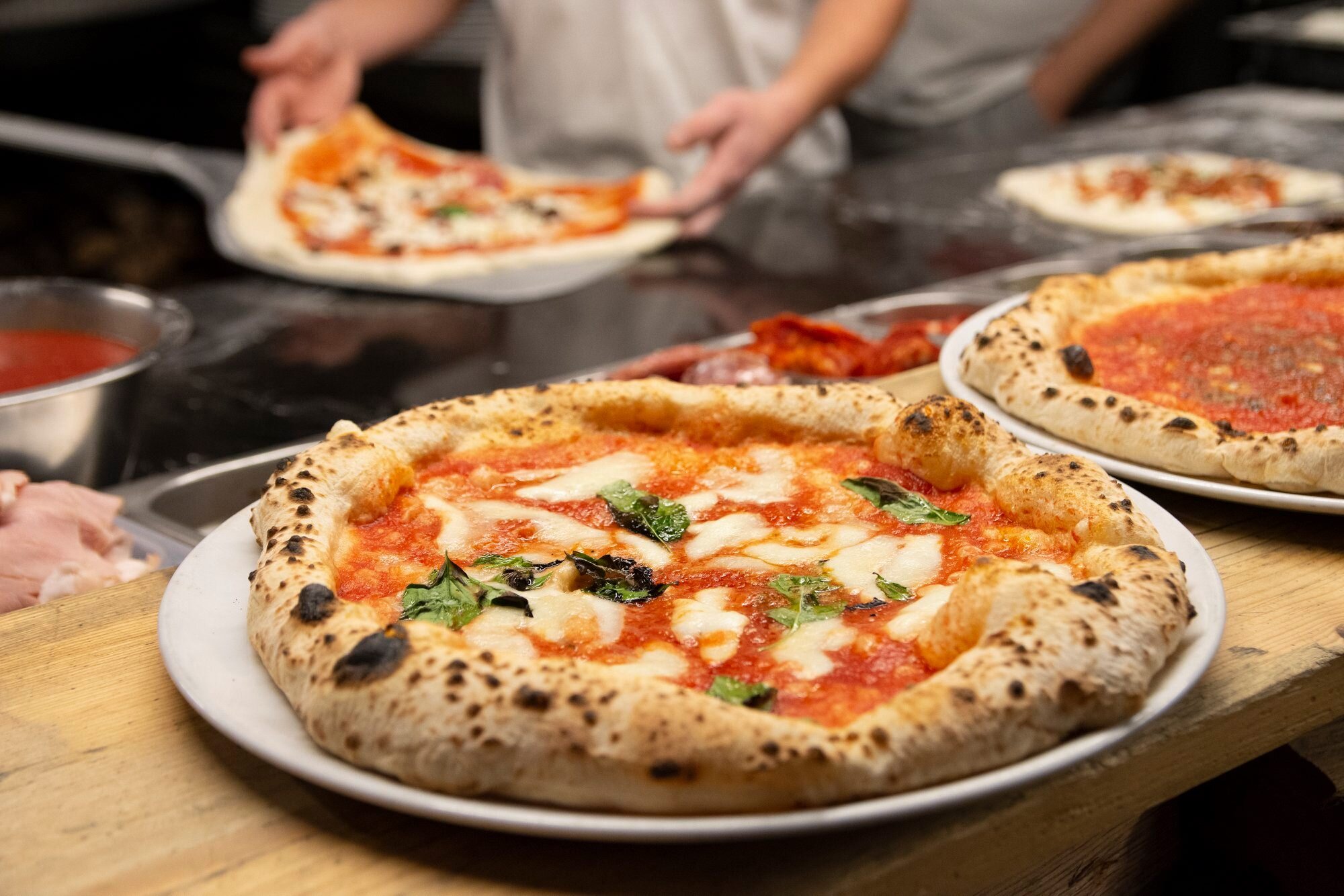Pierogi are our national treasure and comes as a first thing on ”What to eat in Poland” list. The recipe of those middle-size hand-made dumplings dates back to 13 century and since then we have never stopped to make them! The key for having a good quality pierogi is a well made dough. Thin, but not too much, soft, but still springy – the secret how to make the best one is enchanted in the experienced hands of Polish mothers and grandmothers. Some of them are using eggs, some just warm milk, or water but what is sure - the flour must be full of gluten to achieve the proper velvet effect.
Then you need to make a delicious filling in order to make pierogi tastier. We have some traditional filiings which are pierogi ruskie (russian) will be filled with boiled and smash potatoes, onion, and cottage cheese, Christmas version with dried mushrooms and sauerkraut, meat one – with minced pork, beef or goose meat and onion, and sweet one with the seasonal fruits, white cheese and cinnamon, or poppy seeds with nuts. Those are the most classic versions but each region has its own variations, each housewife is using the own creativity to make new flavours and each restaurant can surprise us with the new inventions. Cooked or fried, with beautifully caramelized onion, bacon, or with sour cream on the top - what to choose? And the most important - how to find the best pierogi in the world full of dumplings? Trust the experts! In this article you will find our personal choice of the best pierogi places in Kraków - from economic milk bars, through specialized pierogarnia to fancy fine dining restaurants - but what connecting all those places is just simple GOOD pierogi.
1. Przystanek Pierogarnia
Rynek Dębnicki 3, Bonerowska 14, Stefana Batorego 26, Bratysławska 4, Bora-Komorowskiego 41, os. Na Stoku 32, Krowoderska 74, Kraków (www.przystanek-pierogarnia.pl)
Our number one in Kraków - Przystanek Pierogarnia - serving an excellent pierogi made with the recipes of the owners’ aunt Ula. Located all around the city 7 tiny places usually just have few sitting places, but the quality of pierogi is right like at home, so we can strongly recommend it! Big portions, possibility to have savoury or sweet mix to try different options, and very affordable price – what more do you need?
2. Pierogi MR Vincent
Bożego Ciała 12, Juliusza Lea 114, Kraków (www. pierozkiuvincenta.pl)
This classic pierogi place on Kazimierz with Vincent Van Gough inspired interiors is offering the long menu with classic, vegetarian and more innovative versions. We love them for the dough, compact, but still soft. Their flag option is Vincent pierogi – with fried beef, onion and salami.
3. Bar Mleczny Górnik
Upadate: unfortunately, the restaurant Bat Mleczny Górnik has permanently closed its doors.
Czysta 1, Kraków (www.facebook.com/barmleczny.gornik)
Unofficially the best milk-bars pierogi in the city for all Polish old-fashion places lovers. To buy the classic pierogi you must use the phrase – “Pierogi Ruskie poproszę “ as the staff is not speaking English, but believe us – the dish that you will receive it will be as traditional as it should be!
4. Robimy pierogi food truck
Upadate: unfortunately, the Food Truck Robimy Pierogi ceased operations.
Dajwór 21, Kraków (www.robimypierogi.pl)
Food truck is always a guarantee of the good food. This small pierogi manufacture is serving the high quality hand-made dumplings for eating on-the-go (boiled or fried) prepared only with fresh, natural ingredients. Seasonally you can try here pierogi with rhubarb, wild blueberries or with broad beans.
5. Pierogarnia Krakowiacy
Szewska 23, Westerplatte 15, Kraków (www.facebook.com/PierogarniaKrakowiacy)
All pierogi here are freshly and hand-made and al the raw products are taken from the local producers. Besides classic options their adventurous version like mascarpone-cherry, or rafaello are already legends. Big plus for short time order.
6. Przypiecek
Sławkowska 32, Kraków (www.przypiecek.pl)
Pierogi even in the middle of the night? Of course – in Kraków all your dreams comes true! In Przypiecek you can order the delicious pierogi 24 h/day and you and be sure they will be always fresh made. If you can’t decide what to choose take one of their mixes – traditional, vegetarian, fruits or phantasy one.
7. Sąsiedzi
Miodowa 25, Kraków (www.sasiedzi.oberza.pl)
Extraordinary decorated rustic restaurant located in the basement of the nineteenth-century tenement house in Kazimierz district is specialised in Polish and Galician traditionally cuisine and their bowl of homemade dumplings will satisfy the greatest traditionalists. The portion is smaller than usual (6 pieces) but will allow you to try also the other Polish delicacies.
8. Gospoda na Woli
Królowej Jadwigi 223, Kraków (www.facebook.com/pages/category/Polish-Restaurant/Gospoda-Na-Woli-201617269875431)
This traditional polish restaurant is located a bit more far away from the city centre but is perfect if you would like to make a short break from the touristy Market Square. First take a walk in the beautiful park Willa Decjusza, then visit the Photography Museum MuFo placed in the old wooden shooting range and at the end sit in the garden of Gospoda na Woli and order their famous pierogi ruskie. We can recommend you booking the table earlier as the place can be crowded, especially in weekends.
9. Trzy rybki
Szczepańska 5, Kraków (likusrestauracje.pl/restauracje/restauracja-3-rybki)
The Michelin Guide recommendation, one of the best restaurants in Kraków with unique Renaissance rooms, the ribbed vaults and Gothic windows, is also serving pierogi, but here you should expect a real taste explosion in your mouth! Currently in menu are pierogi with Fontina cheese, purple potatoes chips and truffle, but the chef Krzysztof Żurek is creating always something new, following the season. The highest class pierogi in the city!
10. Nakryto
Beera Meiselsa 14 (www.nakryto.pl)
In Nakryto you will feel like in the polish home, when the grandma will never let you be hungry. Polish hospitality and nostalgic childhood dishes – this is what all of us sometimes need. Here tradition will get extra modern touch - their ruskie pierogi are served with delicate mint cream and the sweet version is made with traditional smoked plum Suska Sechlońska and nuts.















